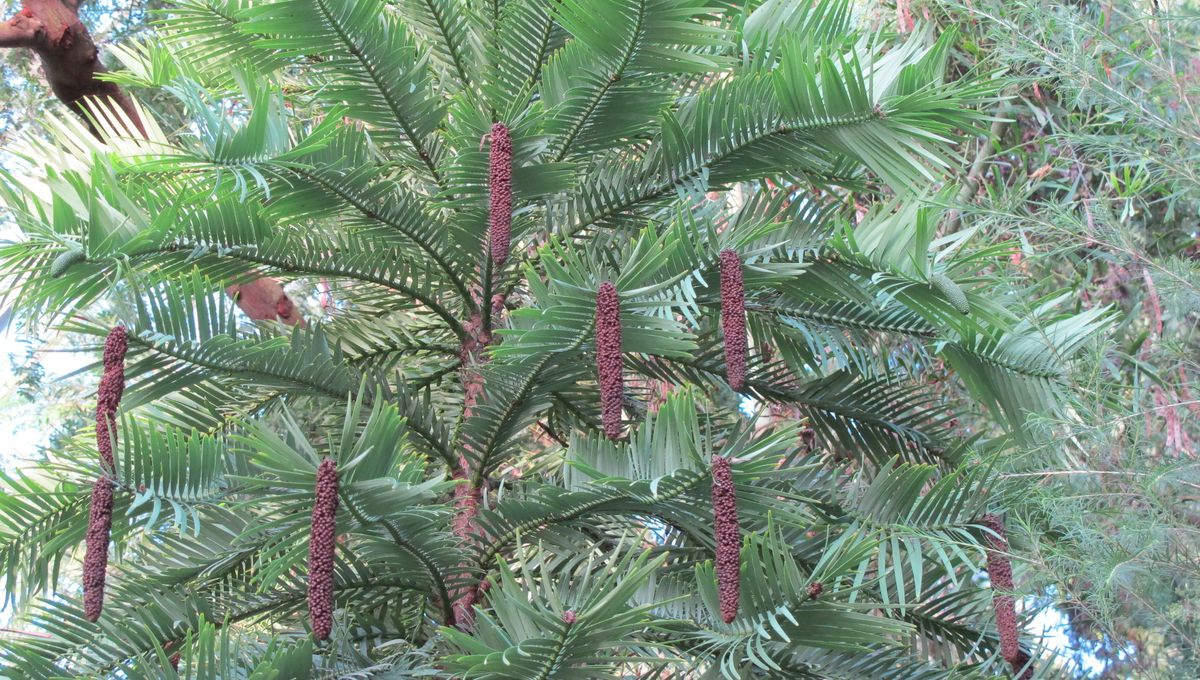
With scarcely any living relatives and a lineage dating to the age of the dinosaurs, the Wollemi pine (Wollemia nobilis) has been described by many as a “living fossil”. Botanists have now sequenced the genome of the Wollemi pine, revealing how the plant has remained relatively unchanged for millions upon millions of years.
It was assumed the tree was extinct until a group of hikers came across the unusual specimen in 1994 while trekking around a canyon northwest of Sydney. Fewer than 60 plants are known to exist in the wild today, limited to just a 10 square kilometer (3.8 square miles) area northwest of Sydney. Those few dozen that remain are under the constant threat of extinction from the wildfires that are prone to burn through the area in drier months.
Writing in a preprint paper – which is yet to be peer-reviewed – the international team of researchers explains that the plant’s tiny, limited population has left the species highly inbred.
The Wollemi pine has a massive genome size, consisting of 26 chromosomes containing some 12.2 billion base pairs. For context, the human genome has roughly 3.4 billion base pairs. Within the species as a whole, however, there is extremely low genetic diversity.
Looking at this wealth of genetic data, the researchers were able to put together a snapshot of how this plant has survived, thrived, and declined over the course of millions of years. It appears the trees’ population increased rapidly in size around 8 to 6 million years ago during the general drying trend as Sahul – a landmass that connected what is now Australia, Tasmania, New Guinea, and the Aru Islands – drifted northwards.
“During this time, rainforest retreat and the expansion of open forest may have created a niche for an emergent such as Wollemia to expand its range,” the study authors write.
However, as rainforests contracted further, the population shrunk to one-fifth of the original size between 7 to 3 million years ago. It became limited to its relatively small patch of Australia since the last major glacial/drying period on the continent around 120,000 years ago, which saw widespread aridity and increased fire intensity.
Although this study is looking into the deep past, it holds some worrying implications for the future. The genome of the Wollemi pine clearly shows that its population numbers suffer when conditions become hotter and drier, most likely as it makes its environment more vulnerable to wildfires.
As the world saw with the unprecedented bushfires of 2019, the climate crisis is already putting a colossal strain on the forest life of Australia. With temperatures set to climb further, it’s uncertain whether the dwindling population of Wollemi pines will make it.
“Our population genomic analysis has revealed the highly inbred, and likely clonal relationship of the few remaining wild Wollemi pines consistent with their critically endangered status,” the study authors conclude.
“This analysis has revealed reductions in population size that coincided with drier and warmer climates over geological time. This trend has rapidly accelerated in recent years in the face of man-made climate change, as sharply illustrated by the recent destructive bushfires that took a toll on the remaining stands,” they add.
The paper is available on the preprint server bioRxiv.
Source Link: "Living Fossil" Wollemi Pine Is Ancient, Inbred, And In A Lot Of Trouble